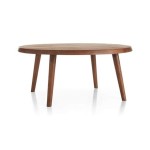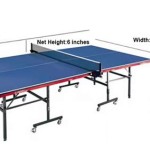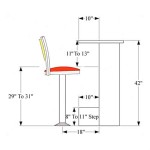Growing Vegetables In Pots: A Comprehensive Guide
Vegetable gardening is a rewarding and enjoyable activity that can provide fresh, organic produce for your family. If you don't have a backyard or garden space, don't despair! You can still grow your own vegetables in pots or containers.
Advantages of Growing Vegetables In Pots
There are several advantages to growing vegetables in pots:
- Space-saving: Pots can be placed on balconies, patios, or even indoors, making them ideal for small spaces.
- Mobility: Pots can be easily moved around, allowing you to adjust their position for optimal sunlight or protection from elements.
- Control over growing conditions: Pots allow you to control the soil type, drainage, and watering schedule. li>Easier to harvest: Vegetables grown in pots are often easier to harvest than those in the ground.
Choosing the Right Pots and Soil
The success of your vegetable garden in pots depends on selecting the right containers and soil:
Pots: Choose pots with drainage holes to prevent waterlogging. The material, such as plastic, terracotta, or fabric, depends on your preference and climate.
Soil: Use a well-draining potting mix specifically designed for containers. Amend it with organic matter like compost or manure to improve fertility.
Planting and Care
Follow these tips for successful planting and care:
- Planting time: Refer to seed packets or plant tags for the optimal planting time for each vegetable.
- Planting depth: Plant seeds or seedlings according to the instructions on the seed packet or plant tag.
- Watering: Water regularly, especially during hot, dry weather. Avoid overwatering, as it can lead to root rot.
- Fertilizing: Fertilize vegetables regularly to provide essential nutrients. Use a balanced fertilizer designed for container gardening.
- Support: Provide support for tall or vining plants using trellises, stakes, or cages.
Vegetable Varieties for Container Gardening
Many vegetables thrive in pots, including:
- Leafy greens: Lettuce, spinach, kale, and arugula.
- Tomatoes: Choose compact varieties like patio or bush tomatoes.
- Peppers: Bell peppers, chili peppers, and jalapeños.
- Cucumbers: Trellis cucumbers to save space.
- Beans: Bush beans and climbing beans are suitable for pots.
Tips for Success
Here are some additional tips to ensure success in growing vegetables in pots:
- Provide plenty of sunlight: Place pots in areas that receive at least 6 hours of sunlight per day.
- Monitor soil moisture: Stick your finger in the soil to check moisture levels before watering.
- Rotate crops: Rotate different types of vegetables in pots each year to avoid soil depletion.
- Control pests and diseases: Use organic pest control methods and inspect plants regularly for signs of disease.
Growing vegetables in pots is a great way to enjoy fresh, homegrown produce without the need for a large garden. By following these tips, you can create a successful and productive container garden that will provide you with nutritious and delicious vegetables throughout the season.

20 Best Vegetables For Container Gardening A Piece Of Rainbow
Vegetables In Containers Rhs Gardening

The Best 11 Vegetables To Grow In Pots And Containers Gardener S Path

How To Grow Vegetables In Pots Bbc Gardeners World

How To Grow Organic Vegetables In Pots About The Garden

20 Best Vegetables For Container Gardening Growing In The Garden

How To Avoid Common Problems Growing Vegetables In Containers Wkbn Com

Vegetable Gardening A Beginner S Guide Nc State Extension Publications

Container Gardening Ten Easy Vegetables To Grow In Pots And How Do It Growing Family

Vegetables You Can Grow In Small Pots Space Gardening








